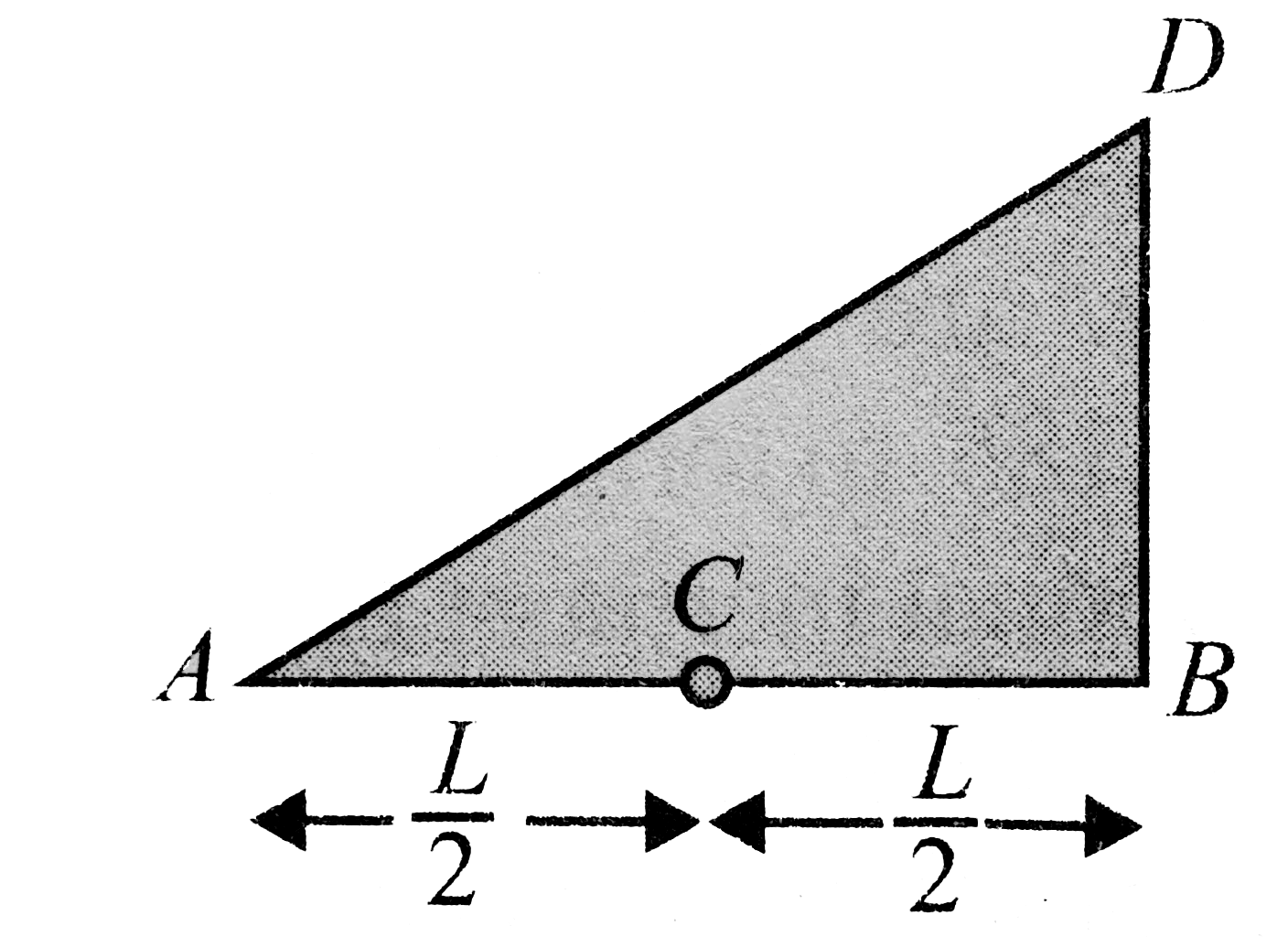A body describes simple harmonic motion with an amplitude of 5 cm and a period of 0.2 s. Find the acceleration and velocity of the body when the displacement is (a) 5 cm (b) 3 cm (c) 0 cm.
Amplitude, A=5cm=0.05
Time period , T=0.2s
(i) For displacement , x=5cm=0.05m
Accelertion is given by : a=−ω2x (2πT)2×=−(2π0.2)2×0.05=−5π2m/s2
Velocity is given by:
v=ω√A2−x2=2πT√(0.05)2−(0.05)2=0
When the displacement of the body is 5cm, its accelertion is −5π2m/s2 and velocity is 0.
(ii)For displacement , x= 3cm=0.03m
a=−ω2×=−(2πT)2×=−(2π0.2)2×0.03=−3π2m/s2
Accelertion is given by:
Velocity is given by: v=ω√A2−x2
v=2πT√A2−x2=2πT√(0.05)2−(0.03)2=2π0.2×0.04=0.4πm/s
When the displacement of the body is 3cm , its accelertion is −3πm/s2 and velocity is 0.4πm/s
(ii) For displacement ,x=0
Acceleration is given by: a=−ω2×=0
v=ω√A2−x2=2πT√A2−x2
Velocity is given by:
=2π0.2√(0.05)2−0=0.5πm/s
When the displacement of the body is 0,its accelertion is 0and velocity 0.5πm/s.
Topper's Solved these Questions
- SIMPLE HARMONIC MOTION BOOK - VMC MODULES ENGLISHCHAPTER - SIMPLE HARMONIC MOTION EXERCISE - LEVEL 0 LONG ANSWER TYPE
2 Videos
- SIMPLE HARMONIC MOTION BOOK - VMC MODULES ENGLISHCHAPTER - SIMPLE HARMONIC MOTION EXERCISE - LEVEL (1)
75 Videos
- SIMPLE HARMONIC MOTION BOOK - VMC MODULES ENGLISHCHAPTER - SIMPLE HARMONIC MOTION EXERCISE - LEVEL 0 SHORT ANSWER TYPE - I
8 Videos
- ROTATIONAL MOTION BOOK - VMC MODULES ENGLISHCHAPTER - ROTATIONAL MOTION EXERCISE - JEE Advanced (Archive) (True/False Type)
3 Videos
- SYSTEM OF A PARTICLES & ROTATIONAL MOTIONBOOK - VMC MODULES ENGLISHCHAPTER - SYSTEM OF A PARTICLES & ROTATIONAL MOTIONEXERCISE - IN-CHAPTER EXERCISE F
10 Videos
Similar Questions
The phase difference between displacement and acceleration of particle in a simple harmonic motion is
View SolutionWhich of the following relationships between the acceleration a and the displacementx of a particle involve simple harmonic motion?
(a) a=0.7x
(b) a=−200x2
(c) a=−10x
(d) a=100x2.
View SolutionWhich of the following examples represents periodic motion ?
(i) A swimmer completing onė (return) trip from one bank of a river to the other bank.
(ii) A freely suspended bar magnet displaced form its N-S direction and released.
(iii) Halley's comet
(iv) A hydrogen molecules rotating about its centre of mass.
(v) An arrow released from a bow.
View SolutionA triangular platge of uniform thickness and densilty ismade to rotate about an axis perpendicular to the plane of the paper an a. passing through A b. passing through B, by the application of some foce F at C (mid point of AB) as show in figure. In which case is angular acceleration more?

View SolutionA ball of radius 11 cm and mass 8 kg rolls from rest down a ramp of length 2m. The ramp is inclined at 35° to the horizontal. When the ball reaches the bottom, its velocity is (sin 35° = 0.57)?
View SolutionA body describes simple harmonic motion with an amplitude of 5 cm and a period of 0.2s . Find the acceleration and velocity of the body when the displacement is (a) 5cm, (b) 3cm, (c) 0 cm.
View SolutionA body describe simple harmonic motion with an amplitude of 5 cm and a period of 0.2 s. Find the acceleration and velocity of the body when the displacement is (a) 5 cm (b) 3 cm (c ) 0 cm.
View SolutionA body describes simple harmonic motion with an amplitude of 5 cm and a period of 0.2s. Find the acceleration and velocity of the body when the displacement is 5 cm.
View SolutionA body describes simple harmonic motion with an amplitude of 5 cm and a period of 0.2 s. Find the acceleration and velocity of the body when the displacement is (a) 5 cm (b) 3 cm (c) 0 cm.
View SolutionA body describes simple harmonic motion with an amplitude of 5 cm and a period of 0.2 s. Find the acceleration and velocity of the body when the displacement is (a) 5 cm (b) 3 cm (c) 0 cm.
View SolutionA body describes simple harmonic motion with an amplitude of 5 cm and a period of 0.2s . Find the acceleration and velocity of the body when the displacement is (a) 5cm, (b) 3cm, (c) 0 cm.
View SolutionA body describes simple harmonic motion with an amplitude of 5 cm and a period of 0.2s. Find the acceleration and velocity of the body when the displacement is 5 cm.
View SolutionA body describes simple harmonic motion with an amplitude of 5 cm and a period of 0.2s. Find the acceleration and velocity of the body when the displacement is 3 cm.
View SolutionA body describes simple harmonic motion with an amplitude of 5 cm and a period of 0.2s . Find the acceleration and velocity of the body when the displacement is 0 cm.
View SolutionA body describes simple harmonic motion with an amplitude of 5 cm and a period of 0.2 s. Find the acceleration and velocity of the body when the displacement is (a) 5 cm (b) 3 cm (c) 0 cm.
View SolutionA body describes simple harmonic motion with an amplitude of 5 cm and a period of 0.2 s. Find the acceleration and velocity of the body when the displacement is (a) 5 cm (b) 3 cm (c) 0 cm.
View Solution

